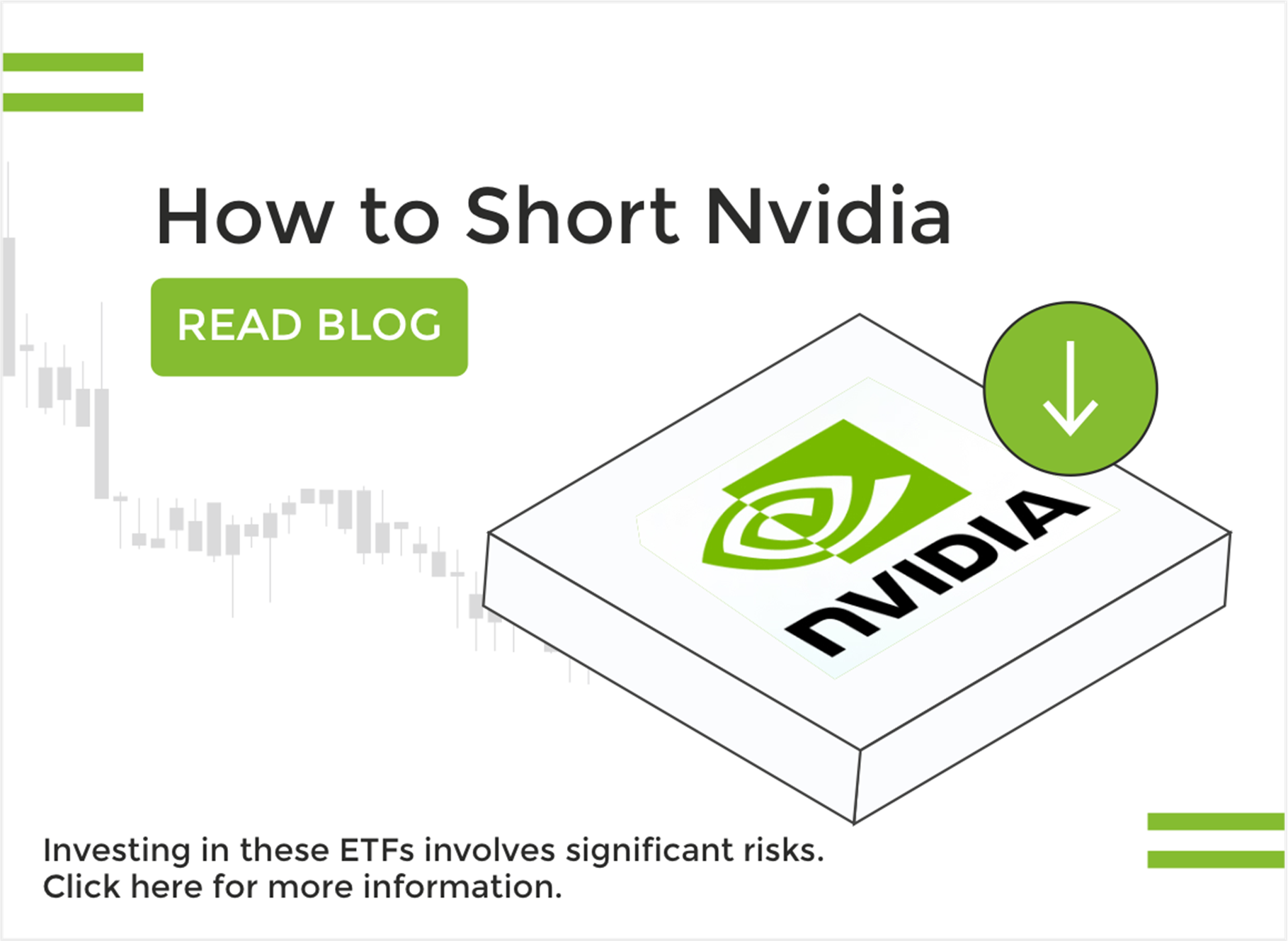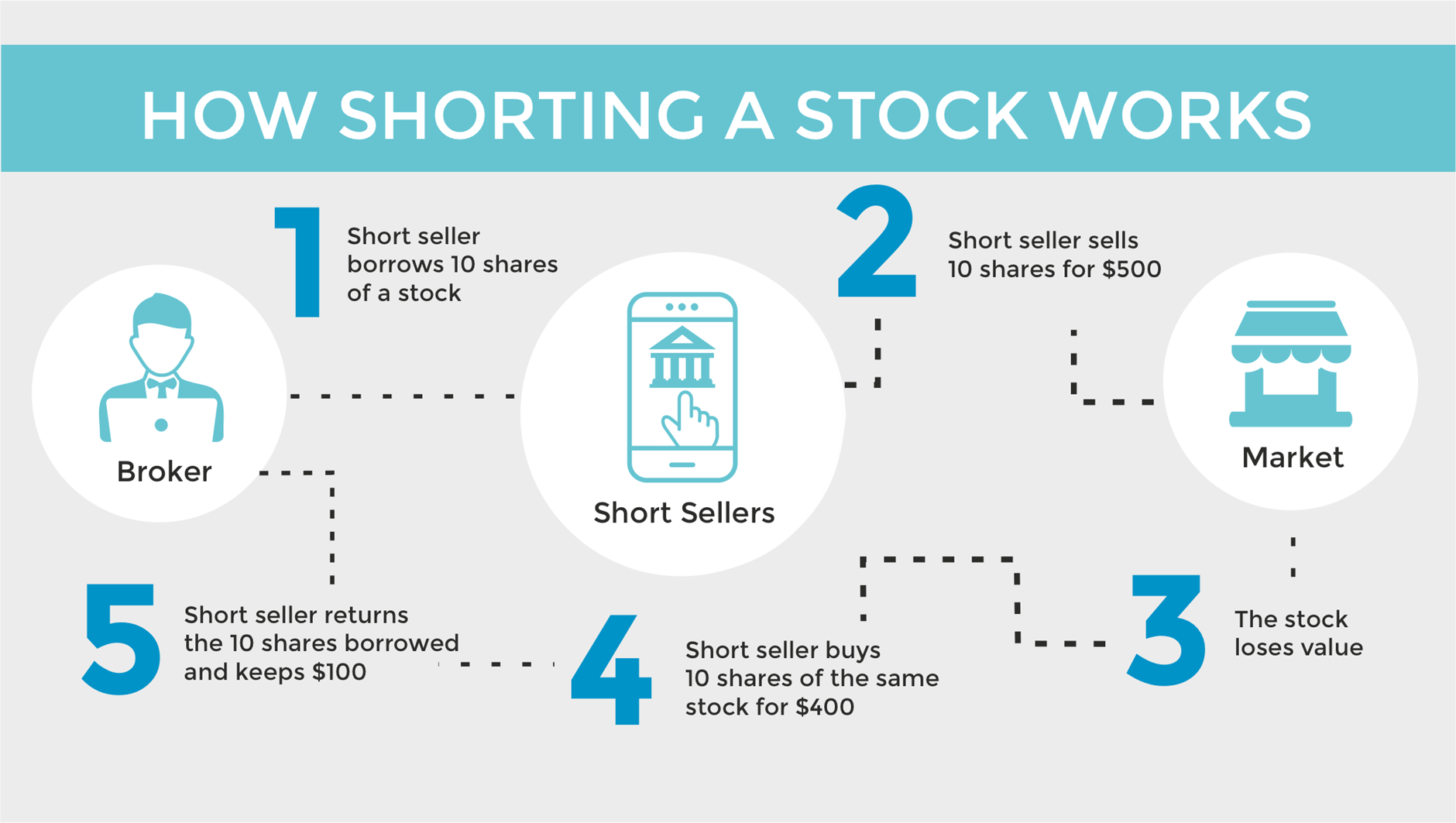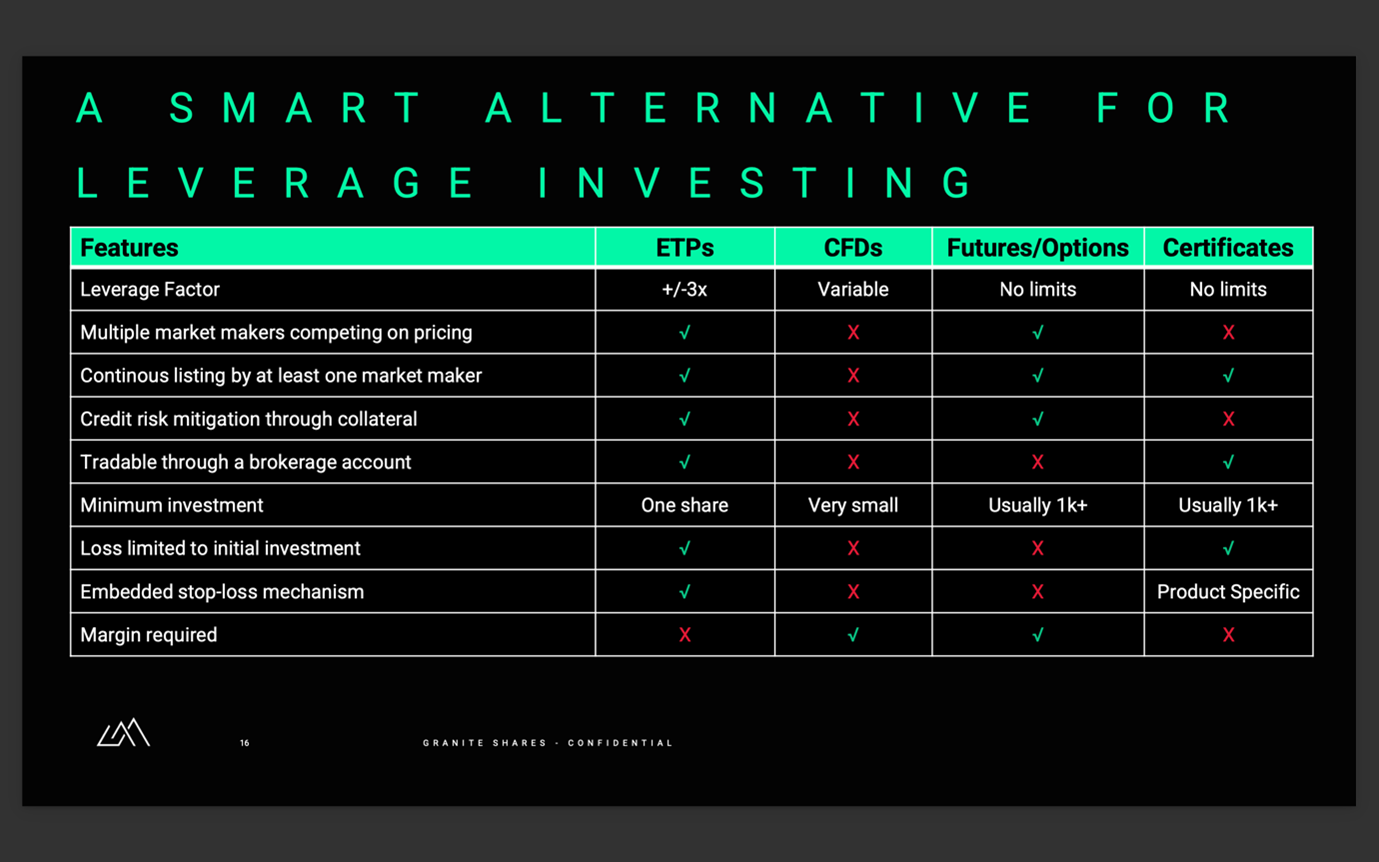How to Short Nvidia
Posted:
There are several ways to short Nvidia’s stock, or any stock for that matter. Investors can, but don’t have to engage in the often-confusing world of direct short selling, which involves getting approved for a margin account and other qualifying steps.
There are other, more convenient methods to short Nvidia stock, such as buying put options or short ETFs. The sections below will detail each of these investment strategies when looking to short an individual stock.
3 Ways to Short Nvidia Stock

There are several ways that investors can short Nvidia stock. This includes direct short selling, put options, and inverse ETFs.
Each of these methods carries their own advantages and potential drawbacks, so it’s important to get a clear understanding of each and find which one best suits your situation.
Direct Short Selling
This happens when an investor sells Nvidia stock that they do not own. The goal is to buy the shares back at a lower price and then profit the difference. Direct short selling can be done through a brokerage account, and here’s a brief step-by-step overview of how the process works:
- An investor borrows Nvidia stock from a broker.
- Investor sells the borrowed stock at the current market price.
- Wait for the NVDA stock price to decline.
- Buy back the stock at a lower price.
- Return the borrowed stock to the broker.
It’s important to note that this is a simplified explanation of how the process works. There are several small details and nuances that go beyond this summary.
For example, short sellers need to be approved for a margin account (with the brokerage) before participating in direct short selling. On top of that, there are also stock borrowing fees associated with this method.
Spread Strategies
- Bear Put Spread: Buy a put option at a higher strike price and sell a put option at a lower strike price. This strategy limits both potential gains and losses.
- Long Put Calendar Spread: Buy a long-term put option and sell a short-term put option at the same strike price. This strategy benefits from time decay.
Inverse ETFs
Another way to short Nvidia stock is through inverse Exchange Traded Funds (ETFs). You can buy inverse ETFs (also called short ETFs) tied to Nvidia stock as a more convenient option than traditional short-selling.
Investors can find these inverse ETFs through a traditional brokerage, and it’s not necessary to borrow or maintain collateral when purchasing these funds. There’s also no margin calls associated with inverse ETFs, meaning that investors cannot lose more than their initial investment on these funds.
Leveraged Short NVDA ETFs

A simple and straightforward way to short Nvidia is through a leveraged short ETF. As mentioned above, you can find these funds in traditional brokerage accounts and purchase them as you would a typical single stock.
GraniteShares 2x NVDA Short Daily ETF is a prime example of this. Checking in with a ticker of NVD, it is an inverse ETF that provides -2x the returns based on NVDA’s daily performance.
For example, when NVDA drops 2% in a day, the leveraged short ETF would provide a 4% return due to the inverse 2x multiplier. However, it’s important to note that the multiplier can lead to extended losses if the underlying stock moves against your position, which means rising in this case.
Comparing Inverse ETFs and Leveraged Inverse ETFs
While both inverse ETFs and leveraged inverse ETFs offer ways to short Nvidia stock, they have distinct characteristics.
Inverse ETFs
Inverse ETFs are designed to deliver the opposite return of Nvidia stock. They are less complex and suitable for more conservative investors.
Leveraged Inverse ETFs
Leveraged inverse ETFs, such as GraniteShares 2x NVDA Short Daily ETF, amplify returns by a multiple of the inverse performance of Nvidia stock. These are suitable for short-term, high-risk strategies and require constant monitoring.
Key Differences
- Complexity: Leveraged ETFs are more complex and require a thorough understanding of their mechanics.
- Risk: Leveraged ETFs carry higher risk due to potential amplified losses.
- Time Horizon: Leveraged ETFs are designed for short-term trading, while inverse ETFs can be held for longer periods.
Investment Strategies for Shorting NVDA
This leveraged short ETF is a great way to capture profits during short-term downward swings. You can also use them to hedge against current positions during expected bear market conditions.
It’s important to remember that these leveraged inverse ETFs are meant for short-term trading strategies deployed by experienced investors to understand the risk and strategies that come with these funds.
These inverse ETFs are only meant to be held for anywhere from a couple of days to a couple of weeks. When an investor holds onto these positions longer than that (months or years), the risk begins to grow due to potential market volatility and the decay effect.
It’s important for potential investors to conduct further research and determine their investment goals and risk profile before purchasing leveraged ETFs of any kind. Position size is key to make sure you are not overexposed to a single asset within the overall context of your portfolio.
Key Considerations Before Shorting Nvidia Stock
Market Conditions
Consider the overall market conditions and Nvidia's industry performance. Shorting during a bullish market can be particularly risky.
Technical Analysis
Utilize technical analysis to identify potential entry and exit points. Look for overbought conditions or bearish patterns that indicate a potential decline in Nvidia's stock price.
Fundamental Analysis
Analyze Nvidia's financial health, including earnings reports, revenue trends, and competitive position. Negative news or poor financial performance can be catalysts for a price decline.
News and Events
Stay informed about news and events that could impact Nvidia's stock price, such as product launches, regulatory changes, and macroeconomic trends.
Risk Management Strategies
When looking to short Nvidia’s stock through inverse leveraged ETFs, there are several risk management strategies to consider. It’s important to have a plan ahead of time in case market volatility pops up and a position moves against you.
Stop-Loss Orders
Setting stop-loss orders ahead of time is a great risk management technique. These stop-losses automatically close a position when it reaches a certain price. This helps prevent extended losses if there is a sharp, extreme price move against you.
The Importance of Position Sizing
As mentioned earlier, it’s very important to consider your position size within the broad context of your overall portfolio. The last thing you want is to be overleveraged in a single leveraged stock and vulnerable to unexpected volatility eating at your overall investment account. Determine your risk tolerance and find your position sizing before considering your move.
Constant Monitoring & Review
Remember that leveraged ETFs are used as short-term investment strategies. That means that constant monitoring and review are important while keeping an eye on your position to limit risk and take profits after certain moves.
Conclusion
There are several ways to short Nvidia stock, and each of them come with their own pros and cons. Regardless of the investment method, it’s important to understand the risks involved and have a plan for them prior to entering the position.
For easy access to short Nvidia stock, investors can look to GraniteShares -2x Short NVDA Daily ETF (ticker: NVD) through their traditional brokerage. Further resources for NVD can be found here and some frequently asked questions regarding GraniteShares leveraged ETFs are located here.
NVIDIA ETFs by GraniteShares
| Product name | Ticker |
|---|---|
| US | |
RISK FACTORS AND IMPORTANT INFORMATION
This material must be preceded or accompanied by a Prospectus. Carefully consider the Fund’s investment objectives risk factors, charges and expenses before investing. Please read the prospectus before investing.
The Fund is not suitable for all investors. The investment program of the funds is speculative, entails substantial risks and include asset classes and investment techniques not employed by most ETFs and mutual funds. Investments in the ETFs are not bank deposits and are not insured or guaranteed by the Federal Deposit Insurance Corporation or any other government agency.The Fund is designed to be utilized only by knowledgeable investors who understand the potential consequences of seeking daily leveraged (2X) investment results, understand the risks associated with the use of leverage and are willing to monitor their portfolios frequently. For periods longer than a single day, the Fund will lose money if the Underlying Stock’s performance is flat, and it is possible that the Fund will lose money even if the Underlying Stock’s performance increases over a period longer than a single day. An investor could lose the full principal value of his/her investment within a single day.
The Fund seeks daily leveraged investment results and are intended to be used as short-term trading vehicles. This Fund attempts to provide daily investment results that correspond to the respective long leveraged multiple of the performance of its underlying stock (a Leverage Long Fund).
Investors should note that such Leverage Long Fund pursues daily leveraged investment objectives, which means that the Fund is riskier than alternatives that do not use leverage because the Fund magnifies the performance of its underlying stock. The volatility of the underlying security may affect a Funds' return as much as, or more than, the return of the underlying security.
Because of daily rebalancing and the compounding of each day’s return over time, the return of the Fund for periods longer than a single day will be the result of each day’s returns compounded over the period, which will very likely differ from 200% of the return of the Underlying Stock over the same period. The Fund will lose money if the Underlying Stock’s performance is flat over time, and as a result of daily rebalancing, the Underlying Stock volatility and the effects of compounding, it is even possible that the Fund will lose money over time while the Underlying Stock's performance increases over a period longer than a single day.
Shares are bought and sold at market price (not NAV) and are not individually redeemed from the ETF. There can be no guarantee that an active trading market for ETF shares will develop or be maintained, or that their listing will continue or remain unchanged. Buying or selling ETF shares on an exchange may require the payment of brokerage commissions and frequent trading may incur brokerage costs that detract significantly from investment returns.
An investment in the Fund involves risk, including the possible loss of principal. The Fund is non-diversified and includes risks associated with the Fund concentrating its investments in a particular industry, sector, or geographic region which can result in increased volatility. The use of derivatives such as futures contracts and swaps are subject to market risks that may cause their price to fluctuate over time. Risks of the Fund include Effects of Compounding and Market Volatility Risk, Leverage Risk, Market Risk, Counterparty Risk, Rebalancing Risk, Intra-Day Investment Risk, Other Investment Companies (including ETFs) Risk, and risks specific to the securities of the Underlying Stock and the sector in which it operates. These and other risks can be found in the prospectus.
This information is not an offer to sell or a solicitation of an offer to buy shares of any Funds to any person in any jurisdiction in which an offer, solicitation, purchase or sale would be unlawful under the securities laws of such jurisdiction. Please consult your tax advisor about the tax consequences of an investment in Fund shares, including the possible application of foreign, state, and local tax laws. You could lose money by investing in the ETFs. There can be no assurance that the investment objective of the Funds will be achieved. None of the Funds should be relied upon as a complete investment program.
The Fund is distributed by ALPS Distributors, Inc, which is not affiliated with GraniteShares or any of its affiliates ©2024 GraniteShares Inc. All rights reserved. GraniteShares, GraniteShares Trusts, and the GraniteShares logo are registered and unregistered trademarks of GraniteShares Inc., in the United States and elsewhere. All other marks are the property of their respective owners


